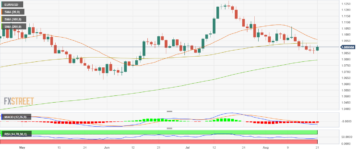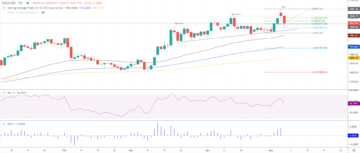
- ASX 200 lost ground ahead of Fed policy decision.
- RBA’s Bullock underscored that the battle against inflation is not yet won.
- PBoC has kept the interest rate unchanged at 3.45%.
- Chinese foreign delegation stressed that China-Australia relations are on the right track.
The ASX 200 Index snapped its three-day winning streak and closed at 7,695 on Wednesday. The Reserve Bank of Australia (RBA) has opted to keep interest rates unchanged at a 12-year high of 4.35%, maintaining its stance for the third consecutive meeting. The market turned cautious before the release of the Federal Reserve’s (Fed) interest rate decision later in the North American session.
Reserve Bank of Australia issued a cautiously worded statement that refrained from providing struggling buyers with hope for an imminent rate cut. RBA Governor Michele Bullock emphasized that “the war is not yet won” against inflation. In her monetary statement, she acknowledged that inflation remained high but did not disclose any specifics regarding the timing or possibility of rate cuts, merely stating that the bank was not “ruling anything in or out.”
Australian equity market followed commodity-linked stocks in early hours, driving movements, with notable gains from Fortescue Metals, up by 1.90%, and Woodside Energy, up by 1.16% at the time of reporting. Core Lithium, Telix Pharmaceuticals, and Paladin Energy lead the top gainers in the ASX 200 Index, while Amcor, Perseus Mining, and South32 are among the top losers.
Mineral Resources, a leading diversified resources company, has entered into a farm-in agreement with Lord Resources for the Horse Rocks lithium project. Earlier this week, the company also finalized a binding head of agreement with Poseidon Nickel to acquire the Lake Johnston nickel concentrator plant.
According to a recent report commissioned by the Chamber of Minerals and Energy of WA (CME), the Western Australian resources sector saw a significant increase in spending by 32% last year, reaching a record $132 billion. Data from the CME’s annual economic contribution factsheets reveal that the direct economic contribution in the state also experienced a notable rise, exceeding $77 billion, equivalent to almost $27,000 per Western Australian.
During the meeting between Chinese Foreign Minister Wang Yi and Australia’s Foreign Affairs Minister Penny Wong, the Chinese side emphasized the highly complementary nature of the economies of China and Australia, noting their significant potential. Stressing that China-Australia relations are on the right track, it was emphasized that there should be no hesitation, deviation, or reversal in the progress made.
Employment FAQs
Labor market conditions are a key element in assessing the health of an economy and thus a key driver for currency valuation. High employment, or low unemployment, has positive implications for consumer spending and thus economic growth, boosting the value of the local currency. Moreover, a very tight labor market – a situation in which there is a shortage of workers to fill open positions – can also have implications on inflation levels and thus monetary policy as low labor supply and high demand leads to higher wages.
The pace at which salaries are growing in an economy is key for policymakers. High wage growth means that households have more money to spend, usually leading to price increases in consumer goods. In contrast to more volatile sources of inflation such as energy prices, wage growth is seen as a key component of underlying and persisting inflation as salary increases are unlikely to be undone. Central banks around the world pay close attention to wage growth data when deciding on monetary policy.
The weight that each central bank assigns to labor market conditions depends on its objectives. Some central banks explicitly have mandates related to the labor market beyond controlling inflation levels. The US Federal Reserve (Fed), for example, has the dual mandate of promoting maximum employment and stable prices. Meanwhile, the European Central Bank’s (ECB) sole mandate is to keep inflation under control. Still, and despite whatever mandates they have, labor market conditions are an important factor for policymakers given its significance as a gauge of the health of the economy and their direct relationship to inflation.
- SEO Powered Content & PR Distribution. Get Amplified Today.
- PlatoData.Network Vertical Generative Ai. Empower Yourself. Access Here.
- PlatoAiStream. Web3 Intelligence. Knowledge Amplified. Access Here.
- PlatoESG. Carbon, CleanTech, Energy, Environment, Solar, Waste Management. Access Here.
- PlatoHealth. Biotech and Clinical Trials Intelligence. Access Here.
- Source: https://www.fxstreet.com/news/asx-200-depreciates-to-near-7710-after-snapping-its-winning-streak-awaits-fed-decision-202403200114
- :has
- :is
- :not
- $UP
- 000
- 1
- 10
- 200
- 35%
- 4
- 7
- 9
- a
- acknowledged
- acquire
- Affairs
- against
- Agreement
- ahead
- almost
- also
- American
- among
- an
- and
- annual
- any
- anything
- ARE
- around
- AS
- Assessing
- ASX
- ASX 200
- At
- attention
- Australia
- Australian
- Bank
- Banks
- Battle
- BE
- before
- between
- Beyond
- Billion
- binding
- boosting
- but
- buyers
- by
- CAN
- cautious
- cautiously
- central
- Central Bank
- Central Banks
- Chamber
- checked
- China
- chinese
- Close
- closed
- Closes
- CME
- company
- complementary
- component
- concentrator
- conditions
- consecutive
- consumer
- contrast
- contribution
- control
- controlling
- Core
- Currency
- Cut
- cuts
- data
- Deciding
- decision
- delegation
- Demand
- depends
- Despite
- deviation
- DID
- direct
- Disclose
- diversified
- driver
- driving
- dual
- each
- Earlier
- Early
- ECB
- Economic
- Economic growth
- economies
- economy
- element
- emphasized
- employment
- energy
- energy prices
- entered
- equity
- Equivalent
- European
- example
- exceeding
- experienced
- explicitly
- factor
- FAQ
- Fed
- Federal
- federal reserve
- fill
- finalized
- Focus
- followed
- For
- foreign
- forex
- from
- Gainers
- Gains
- gauge
- given
- goods
- Governor
- Ground
- Growing
- Growth
- Have
- head
- Health
- her
- High
- higher
- highly
- hope
- Horse
- HOURS
- households
- HTTPS
- implications
- important
- in
- Increase
- Increases
- index
- inflation
- interest
- INTEREST RATE
- into
- Issued
- IT
- ITS
- jpg
- Keep
- kept
- Key
- labor
- labor market
- lake
- Last
- Last Year
- later
- lead
- leading
- Leads
- levels
- lithium
- local
- Losers
- Low
- lower
- made
- maintaining
- mandate
- mandates
- Market
- market conditions
- maximum
- means
- Meanwhile
- meeting
- merely
- Metals
- minerals
- Mining
- minister
- Monetary
- Monetary Policy
- money
- more
- Moreover
- movements
- Nature
- Nickel
- no
- North
- notable
- noting
- objectives
- of
- on
- open
- or
- out
- Pace
- Pay
- per
- pharmaceuticals
- plant
- plato
- Plato Data Intelligence
- PlatoData
- policy
- policymakers
- poseidon
- positions
- positive
- possibility
- potential
- price
- Prices
- Progress
- project
- promoting
- providing
- Rate
- RBA
- reaching
- recent
- record
- regarding
- related
- relations
- relationship
- release
- remained
- report
- Reporting
- Reserve
- reserve bank
- reserve bank of australia
- Reserve Bank of Australia (RBA)
- Resources
- reveal
- Reversal
- right
- Rise
- ruling
- s
- salaries
- salary
- saw
- sector
- seen
- session
- she
- shortage
- should
- side
- significance
- significant
- situation
- some
- Sources
- specifics
- spend
- Spending
- stable
- stance
- State
- Statement
- stating
- Still
- Stocks
- Struggling
- such
- supply
- that
- The
- The State
- The US Federal Reserve
- the world
- their
- There.
- they
- Third
- three-day
- Thus
- time
- timing
- to
- today
- top
- track
- unchanged
- under
- underlying
- underscored
- unemployment
- unlikely
- us
- US Federal
- us federal reserve
- usually
- v1
- Valuation
- value
- very
- volatile
- wage
- wages
- wang
- war
- was
- Wednesday
- weight
- Western
- whatever
- when
- which
- while
- winning
- with
- Won
- wong
- workers
- world
- year
- yet
- zephyrnet

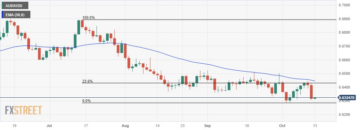
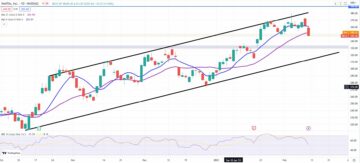
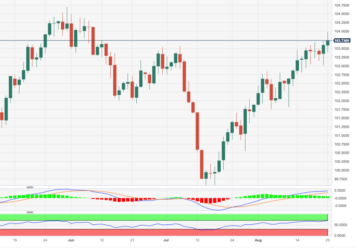
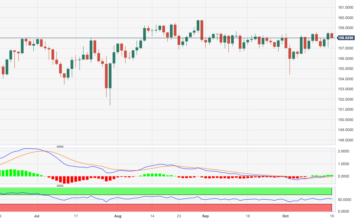


![McDonald’s Corp. Elliott Wave technical analysis [Video]](https://platoaistream.net/wp-content/uploads/2024/03/mcdonalds-corp-elliott-wave-technical-analysis-video-360x209.png)


